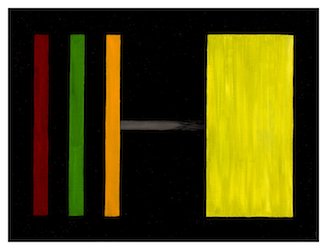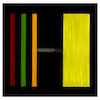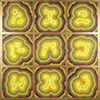|
A DREAM OF STARS AND LIFE, PART 1
By PHILIP ANDERSSEN Published: Monday, 10 December 2012 |
|

“It seems to me not impossible that cholera, gravel, consumption may be celestial means of transport just as steamships, buses, railways are means of transport on this earth. To die quietly of old age would be like going on foot…” (Van Gogh Letter 506).
It seems to me not impossible that a consuming cypress, a choleric revolving nebula, and a vexing night scenario may be sublime means of transport for the wish of recovery of the soul. It seems to me not impossible that Vincent Van Gogh shaped these images in “The Starry Night” to crave for the liberation of his spirit from the imprisonment of his mind: a movement from the earthly confines of torment into the celestial freedom of spirit. It seems to me not impossible that “The Starry Night” is Vincent Van Gogh’s vision that his anguish would find an end in death. But why? How can we get just a glimpse of this with the help of “The Starry Night”?
Writing about art is no easy task because its nature simply escapes from clear definitions. Criticism is the traditional way in which we label this task, but criticism itself suggest a basis built upon contradictions that already create a problem with which we have to deal. Its reason however is rooted not in the inability of the critic as much as on the nature of the object that we wish to analyze: the artwork. Can we dissect, with a rational machinery, a painting and proudly claim that we know the painting? That we see it? The challenge for criticism lies on the grounds of solving these questions, pseudo-equations. Very often, however, interpretation simply amounts to the systematic autopsy of the artwork, extracting components that have an identity with which we feel comfortable, figures that can easily be correlated, perhaps, with cultural references, and reaching bold conclusions in terms of them. “By reducing the artwork to its content and then interpreting that, one tames the work of art. Interpretation makes art manageable, conformable” (Sontag 759). Criticism builds on the idea of the existence of a content hidden between brushstrokes and takes on the enterprise of solving a presumed puzzle, of discovering the secret that colors and shapes selfishly guard. There is indeed a content in art, and the supreme quest of criticism is to attempt to get just a glimpse of it, but we must first understand the nature of this content: a content that is intimately linked to the purpose of art, to the artist’s mind.
Art means expression. We know that any means of expression presumes as such the existence of a content or an idea, and a mechanism of transmission for it. But how does another person understand what we want to say? If we examine the handy case of the language, the use of words, it is clear that interpretation nourishes from conventions: we say that what is signified by the notation “table” is a piece of furniture consisting of a flat, horizontal top usually set on legs. We use conventions, as simple as that. But in art conventions are subtler because the mechanism of expression depends exclusively on the artist. Of course there are conventions in art which apply to very few specific elements in the artwork, such as cultural and historical influences that are easily identifiable as well, but their scope barely reaches profound themes. The content that we want is not this. The true content of the painting finds meaning in the artist: What is he doing? Why did he paint this? The artist has absolute control over the channel and that is what makes up the nature and the beauty of art. We have no control over the conventions. . .
Van Gogh, Vincent. Letters 593, 594, 595 and 596. The Complete letters of Vincent Van Gogh, Volume three. Ed. Bullfinch Press. Toronto. 1991. 176-186.
Sontag, Susan. “Against Interpretation.” A World of Ideas: Essential Readings for College Writers. Ed. Lee A. Jacobus. Boston: Bedford/St Martin’s, 1998. 754-765.
comments powered by Disqus
| RELATED ARTICLES | |||||||||||
|
|
|
|
||||||||


